Dean Clough
An industrial powerhouse of the past

Dean Clough is a group of large factory buildings built in the 1840s–60s for Crossley's Carpets, becoming one of the world's largest carpet factories (half a mile long with 1,250,000 square feet (116,000 m2) of floorspace). After years of declining production it closed in 1983, when it was bought by a consortium led by Sir Ernest Hall which developed the Grade II listed site for various commercial and cultural uses. It is now seen as a leading example of successful urban regeneration. Dean Clough is located on the north side of Halifax near the Victorian North Bridge and the modern flyover sections of the Burdock Way relief road system. The converted mills now house about 150 large and small businesses and arts venues including Crossley Gallery and several other art galleries and the Viaduct Theatre, home base for the Northern Broadsides theatre company. Phoenix Radio 96.7 FM has its studios in D Mill and Lloyds Banking Group has offices in G Mill.
John Crossley, with his brother, Thomas, and James Travis first leased Dean Clough Mills in 1802. When this lease expired after twenty years John Crossley took on a new lease in his own name. After his death in 1837, at which time three hundred people were employed, his three sons, John, Joseph and Francis, continued the business as John Crossley and Sons. They formed a joint stock company in 1864, becoming one of the first limited liability companies in Britain. It was this company that built the very large mills on the site between 1841 and 1869, together with large sheds which have now been demolished. Around 1855 the alphabetical naming system was introduced for the mills. There were also other premises in Halifax, employing five thousand people by 1900. The company also operated at Kidderminster and had warehouses in London and Manchester. During the two world wars production changed from carpets to military supplies such as webbing, blankets and khaki yarn for uniforms. When Chairman Patrick Crossley retired in 1970 the company moved its headquarters to Kidderminster, and it was decided in 1982 to close the Dean Clough site..
Sir Ernest Hall’s son Jeremy, has gradually refurbished the buildings for office and cultural uses by a large number of companies.
There are a number of mill buildings, some very large, mostly named with letters of the alphabet. Most of them are in the bottom of the steep sided Hebble Valley but G Mill stands on the steep bank to the south of Dean Clough Road, reducing from nine storeys at the road to five at the top of the bank. The first mill built on the site by the Crossley family in 1841 was A mill, followed by six storey B Mill in 1844. They are likely to have originally contained spinning and some weaving equipment. The first weaving shed, Old Shed, was built in 1849. These were followed by C Mill in 1850, New Shed in 1853, E Mill in 1857, F Mill in 1858, G Mill in 1867, and H Mill in 1869. Other smaller buildings were also built on the site.
For further information please visit their website https://www.deanclough.com
Related pages...
Calderdale Royal Hospital
more The main Hospital for the the town
Shaw Lodge Mills
more A brief history of this icon of the textile industry in the Halifax area

The Shay Stadium
more The home of professional sport in the town

Eureka! The National Children's Museum
more A popular children's museum
The Halifax Building Society
more Headquarters of the eponymous financial institute
_1.jpg)
Wainhouse Tower
more A victorian "Folly"
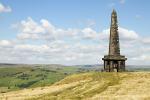
Stoodley Pike
more A war memorial in the Todmorden area
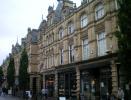
The Halifax Borough market
more The victorian covered market in the town centre
_1.jpg)
Square Church Spire
more The spire is all that remains of this church
_1.jpg)
The Piece Hall
more Halifax's jewel in the crown
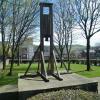
The Halifax Gibbet
more A forerunner of the Guillotine
Halifax Town Hall
more Seat of Local Governance

Halifax Minster
more The centre of worship in Town
_1.jpg)
All Souls Church
more The church of a former model village
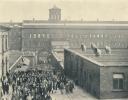
Black Dyke Mills
more An icon on the outskirts of Halifax
back to page above this...
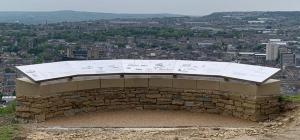
The Centenary Viewing Platform at Beacon Hill
back To celebrate 100 years of service to the town of Halifax we have commissioned viewing platform on Beacon Hill overlooking the town. Situated on the Magna Via, an old packhorse route, the walk to the top is worth it.